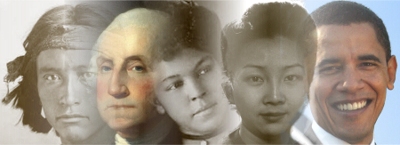Excerpts from Examining the Evidence: Seven Strategies for Teaching with Primary Sources
From Strategy 3: Look for Bias
Manipulation of the Source
Bias can manifest itself in the editing of a source as well as the creation of it. A
potent example to bring up with older students is the diary of Anne Frank. Anne
Frank wrote her diary but she wasn’t alive to choose whether or what parts of the
diary should be published. Her father edited her diary and didn’t include many
entries where Anne wrote about sex or wrote less than kind or flattering descriptions
of the people in her life. For example, Otto Frank understandably did not
include an entry where Anne wrote, “Father’s fondness for talking about farting and
going to the lavatory is disgusting.” (A complete version of Anne Frank’s diary was
published in 1996 after her father’s death.) This example, instructive and memorable
as it is, may not be something you want to use with your students. For classroom
purposes, you could give your students this example. Anne wrote about their
helper Bep’s getting engaged. She says that the family isn’t happy about it because
they don’t think Bep loves her future husband. Otto Frank removed that entry
because Bep was still alive and he didn’t want to hurt her feelings.
Often, material will be edited for use in textbooks. Excerpts will be chosen for
their level of readability, for example, and difficult sections edited out. A photograph
can also be edited. Photographs are often cropped before they are published,
sometimes to fit space requirements and sometimes to make a better composition.
But it is also possible to crop something out of a photograph that someone does not
want us to see. A famous example of this is Stalin’s systematic removal of his political
enemies from official photographs. Visual examples of this can be found by
doing a simple Internet search. For example, a University of Minnesota web page
shows the removal of Trotsky from some Soviet photographs.
Let’s emphasize again that we are not saying that any of these sources are useless
as sources of information. But the fact that both images and text can be manipulated
points up the fact that it is dangerous to generalize from just one source.
Remember, “if your mother tells you she loves you, . . . ”
“The camera doesn’t lie” has lost a lot of currency since the advent of Photoshop,
but a photograph does not have to be significantly altered to show the bias of the
photographer. A few harsh shadows can make a kind, compassionate person look
like a villain. A few pretty props and a soft focus can make a selfish lout look like an
angel. Most photographic bias, of course, is much subtler than that, but having a
little bit of visual literacy can be very valuable in looking at a primary source photograph
as well as cartoons, drawings, and other forms of art that we intuitively feel
would be easier to “fudge.”
For example, it is possible to change the effect of a photograph simply by lighting
it differently.

Photographs of radio personality Mike Nowak. Photograph by Helen Tracy, 2013. Austin/Thompson Collection
When
asked to describe the character of the man on the left, viewers might use
words like kind and friendly. The print on the right would be much more likely to
elicit words like tense, annoyed, or even sinister.
From Strategy 4: Examine Closely the Source Itself
Close Examination of Text
Of course the same skills can be applied to textual as well as visual primary sources. To start students on a “case,” find a text primary source with some good and interesting clues. For example, here is a piece of text:
Rose at five. The sun was shining brightly through my window, and I felt vexed with myself that he should have risen before me; I shall not let him have that advantage again very soon. How bright and beautiful are these May mornings! The air is so pure and balmy, the trees are in full blossom, and the little birds sing sweetly. I stand by the window listening to their music, but suddenly remember that I have an Arithmetic lesson which employes me until breakfast; then to school, recited my lessons and commenced my journal. After dinner practised a music lesson, did some sewing, and then took a pleasant walk by the water. I stood for some time admiring the waves as they rose and fell, sparkling in the sun, and could not help envying a party of boys who were enjoying themselves in a sailing boat. On my way home, I stopped at Mrs. Putman’s and commenced reading “Hard Times,” a new story by Dickens ... I anticipate to much pleasure in reading this story.—Saw some agreeable friends ... prepared tea, and spent the evening in writing. |
Read the piece of text with your students to get a sense of it. Then go through the text, gathering clues and applying the strategies.
Strategy 1: The clues tell us that this piece of text is probably a journal or diary entry. It could be a part of a letter, but there is no salutation and no inquiry into another person’s well being. (i.e., “How are you and the family.”) One clue that it’s a journal is that the writer mentions writing in a journal (“recited my lessons and commenced my journal.”) Also, the style of chronologically recording the events and
impressions of the day is a clue that this is a diary or journal.
Strategy 2: The audience is the writer of the journal. The purpose is to record the events and feelings of a day. There may be other purposes as well, including self-expression.
Strategy 3: Since a diary is not usually written for other people to read, there are only the writer’s deeply felt and culturally ingrained biases, not any deliberate attempt to influence the reader.
Now, what other questions can be answered just from examining the text?
When: The clue “these May mornings” tells us the month. (Even without that specific information we could determine that it was written close to the summer solstice because the sun was up at 5 a.m.) The clue “’Hard Times,’ a new story by Dickens” tells us the year. Hard Times was published in 1854, so this piece of text was written in May 1854.
Who: We know that this person is probably a young person because he or she is attending school. We know that this person is probably female because of the clue “did some sewing.” In 1854, sewing was usually done by women and girls. We know that this person is probably part of the middle or upper class because she is attending school rather than working.
Where: There is not much information here about where the text was written. The text tells us that the writer was near the water and that there were trees and birds, which could describe a great many places.
So without any source information, the clues in the text tell us that this is a diary entry written by a middle or upper class girl in May, 1854, who lived near water. And in fact this is the Wednesday, May 24 entry from Charlotte Forten’s diary, written while Charlotte was living in Salem, Massachusetts. It appears in an abridgement of the diary published by Capstone Press and entitled Diary of Charlotte
Forten: A Free Black Girl Before the Civil War.
Of course, not all pieces of text will answer all these questions. Also, students will usually have source material that will provide the answers to at least some of those questions. But close examination of textual primary sources can be used to help students determine what is said explicitly and what can be inferred as well as to understand their own reactions to and impressions of a piece of text.
|

